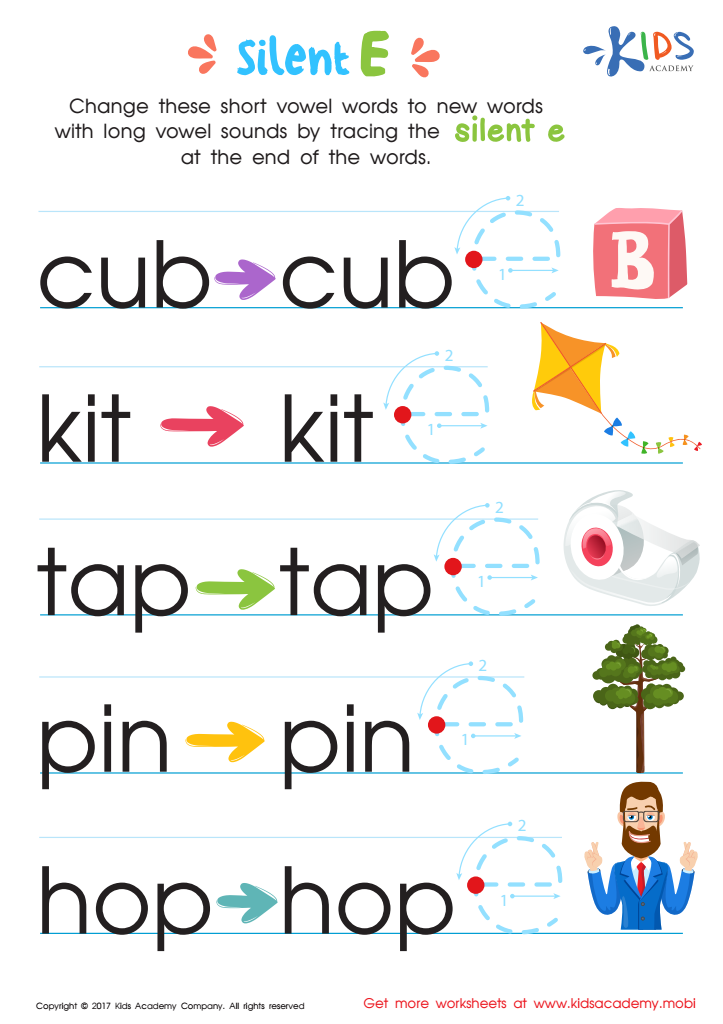Silent "e" rule understanding Worksheets for Kids
1 filtered results
-
From - To


Silent E Words Worksheet
Question/Answer
How to train the Silent "e" rule understanding skill in Grade 2 students learning about Silent Vowels?
To train Grade 2 students in the Silent "e" rule, use multisensory activities like highlighting or coloring the silent "e" in words, creating word lists that contrast short and long vowel sounds (e.g., "cap" vs. "cape"), and engaging in games where students transform short vowel words into long vowel words by adding an "e". Reinforce through repetition and positive feedback.
How to test a Grade 2 student’s Silent "e" rule understanding skills?
To test a Grade 2 student's understanding of the Silent "e" rule, provide a mix of words with and without silent "e" and ask them to read aloud, noting changes in vowel sounds. Additionally, have them convert short vowel words into long vowel words by adding "e" (e. g.
What does the Silent "e" rule understanding skill mean when it comes to Grade 2 Silent Vowels learning?
The Silent "e" rule understanding skill in Grade 2 Silent Vowels learning refers to the ability of students to recognize how a silent "e" at the end of a word changes the pronunciation of the vowel in the middle of the word, typically making it sound like its name (a long vowel sound), as in "make" or "ride."
 Assign to the classroom
Assign to the classroom












